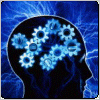I have two SATA hard drives set at Raid 0 in my computer. I purchased a third drive today. The plan is to install Windows on the new drive and use the Raid 0 stack for my data. I've backed up my system, but am having trouble getting the new drive to work properly. From what I can tell, the motherboard isn't letting the new drive initialize.
When I connect the new drive and boot up, I get the following message during POST. Please note that the error message is typed incorrectly. I am aware of this mistake, but am typing it just as it appears on my screen to avoid any confusion--
"Hardware initiate failed. Please check device!!!"
"The BIOS does not be installed. Press <g> to continue."
I press "g" and the computer boots, but very slowly. I can't find the new hard drive in the hardware list of device manager.
The software that came with the drive is of no use to me. I haven't been able to get it to do anything.
Please let me know what other information you all might need to help me resolve this issue. Any and all information will be greatly appreciated.
Thanks,
Magus















 Sign In
Sign In Create Account
Create Account

